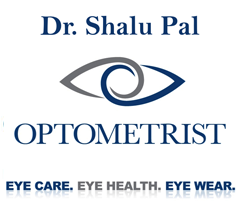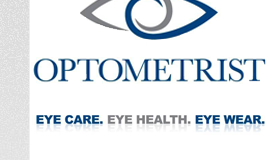A corneal dystrophy is a condition in which one or more types of tissues of the cornea, the clear dome-shaped structure located at the front of the eye, begin to lose their clarity, compromising vision. There are more than 20 corneal dystrophies, which share certain traits, including:
- They are usually genetic
- They affect both eyes equally
- They are not caused by diet, injury or any lifestyle choices
- Most are progressive, usually in a gradual way
- Most begin in one of the five layers of the cornea, but may later spread to nearby layers
- Most do not affect other body parts
- Most are not related to any other diseases or conditions affecting the eyes or other body areas
- Most can occur in otherwise totally healthy patients, male or female
Corneal dystrophies affect vision in widely different ways, with some causing severe visual impairment, and others causing no visual problems at all. Some may cause repeated episodes of pain and discomfort without permanent vision loss.
Some of the most common corneal dystrophies include Fuchs' Dystrophy, keratoconus, lattice dystrophy and map-dot-fingerprint dystrophy, which is also known as epithelial basement membrane dystrophy.
Some corneal dystrophies cause symptoms of blurred vision or pain that cause the person to see an eyecare practitioner, while others have virtually no symptoms and may be diagnosed as part of a regular vision examination.
Fuchs’ Dystrophy
This dystrophy, pronounced “fewks dis-trophy,” is a slowly progressing disease that usually affects both eyes and is slightly more common in women than in men. Although eyecare practitioners often see early signs of it in patients in their 30s or 40s, the disease rarely affects vision until people reach their 50s or 60s.
The cornea is composed of several layers of tissue, the largest being in the middle, called the stroma. The stroma is made up of cells very similar to other connective tissue in the body, except that the cells are lined up in a very regular fashion, and that excess water is continually being pumped out by the innermost corneal layer, the endothelium.
Normal endothelium appears in optical instruments as a regular pattern of hexagonal-shaped cells, each of uniform size and shape. In Fuchs’ Dystrophy, these cells lose their regularity in size and shape, becoming more random in appearance and less effective in their function.
Fuchs’ Dystrophy occurs when the endothelium gradually becomes less efficient at removing excess water from the cornea. As a result of this retained water, called edema, the stromal cells become misaligned and lose their characteristic clarity, causing blurred vision and distortion, progressing to the formation of tiny blisters called bullae (“bull-eye”). These can burst, contributing more blur and distortion as well as pain.
In early stages, a person with Fuchs’ Dystrophy will wake up with blurred vision that will usually become clearer during the day. As the disease progresses, swelling increases and can no longer decrease significantly during the day, causing constant haziness and reduced vision.
There is no known prevention for Fuchs’ Dystrophy. Because it is genetic, if either parent has Fuchs’ there is about a 50% chance that each child will also have it; however, because it varies in severity, a person inheriting it may not have the same visual symptoms or disruption.
Treatment
The first line of treatment of Fuchs’ Dystrophy will usually include an attempt to reduce swelling with the use of eye drops, ointments or soft contact lenses. The type of drops is important, so patients should not go into a store and buy any ocular lubricants on their own; the specific drops used in Fuchs’ are formulated to draw excess moisture out of the cornea.
As the disease progresses, a corneal transplant may be considered. The success rate of full-thickness corneal transplants is very high for patients with Fuchs’ Dystrophy. According to data supplied by the Corneal Research Foundation, 98% of patients that had penetrating keratoplasty, or complete corneal replacement, still had clear corneas five years after surgery. These results are among the most successful reported in medical literature.
More recently, a partial-thickness transplant which is done through a small incision and spares the healthy tissues of the patient’s cornea has been shown to be very successful and safer than full-thickness keratoplasty. There are several different types of this surgery; your ocular surgeon will discuss the options and make recommendations based on the amount of damage present and the overall severity of the disease. Partial-layer keratoplastic surgeries require a much smaller incision and cause fewer adverse events than full corneal replacement. In addition, an advanced form of partial-thickness keratoplasty using a femtosecond laser has shown encouraging results for treatment of Fuchs’ Dystrophy. If there is a family history of Fuchs’ Dystrophy or other corneal dystrophies, an eyecare practitioner can evaluate and treat this condition.







